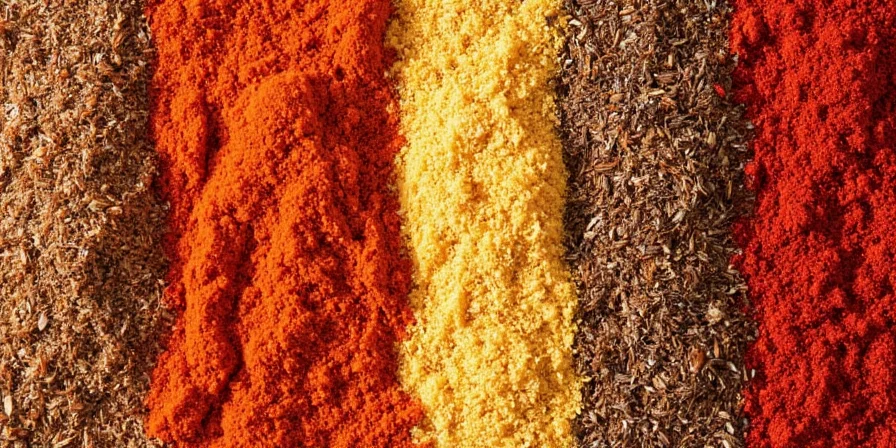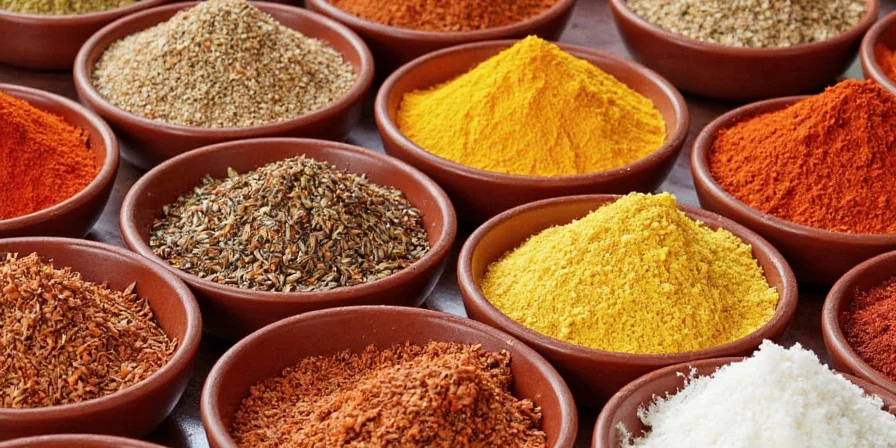Savory spices are herbs and seasonings that enhance umami and create rich, complex flavors in food without sweetness. The most common savory spices include smoked paprika, cumin, turmeric, fennel seeds, and coriander. Unlike sweet or aromatic spices, these ingredients build depth in dishes like stews, roasts, and vegetable preparations. Whether you're making a simple weeknight dinner or experimenting with new recipes, understanding these essential spices transforms ordinary meals into flavorful experiences. This guide explains exactly which spices qualify as savory, how to use them properly, and which combinations deliver maximum flavor impact—without overwhelming chemical jargon.
Table of Contents
- What Are Savory Spices? (Simple Definition)
- Top 5 Savory Spices Every Kitchen Needs
- How to Use Savory Spices Correctly
- Best Savory Spice Combinations for Common Dishes
- 3 Biggest Mistakes People Make (And How to Fix Them)
- Science Behind Savory Flavors (Optional Reading)
- Conclusion: Build Better Flavor Profiles
What Are Savory Spices? (Simple Definition)
Savory spices create rich, satisfying flavors that aren't sweet. They're the backbone of countless dishes across global cuisines, providing depth rather than sweetness or heat. While umami (the 'fifth taste') plays a role, savory encompasses the complete flavor profile created when these spices interact with other ingredients. The key difference from sweet spices like cinnamon or nutmeg is their ability to enhance meaty, earthy notes in both plant-based and animal-based dishes.
Unlike specialized culinary terms, "savory" simply describes spices that make food taste more substantial and satisfying without adding sweetness. These spices work particularly well in dishes where you want to emphasize natural flavors rather than mask them.

Top 5 Savory Spices Every Kitchen Needs
While many spices contribute to savory profiles, these five deliver the most reliable results for everyday cooking:
| Spice | Flavor Profile | Best Starter Uses | Replacement Tip |
|---|---|---|---|
| Smoked Paprika | Earthy, smoky depth | Chili, roasted potatoes, tomato sauces | Regular paprika + dash of liquid smoke |
| Cumin | Warm, slightly bitter earthiness | Tacos, bean dishes, curries | Garam masala (use 1/2 amount) |
| Turmeric | Earthy, warm, slightly peppery | Rice dishes, lentil soup, roasted vegetables | Curry powder (use 1/4 amount) |
| Fennel Seeds | Subtle licorice note | Sausage, roasted root vegetables, tomato sauces | Anise seed (use half amount) |
| Coriander | Warm, citrusy earthiness | Curries, marinades, roasted carrots | Cumin (use 1/3 amount) |
How to Use Savory Spices Correctly
Using savory spices effectively requires understanding their optimal application points in cooking:
- For dried spices: Add early in cooking for soups/stews to allow flavors to meld, but near the end for quick-cooking dishes like stir-fries
- For whole spices: Toast in dry pan for 30-60 seconds before using to intensify flavor without bitterness
- For spice blends: Make small batches (enough for 1-2 recipes) to ensure freshness
- Basic ratio: Start with 1/4 teaspoon per serving and adjust upward (most savory spices become bitter if overused)
Pro tip: When adapting recipes, reduce salt by 25% when adding savory spices—they enhance salt perception. This helps control sodium while maintaining flavor depth.

Best Savory Spice Combinations for Common Dishes
These tested combinations work reliably for everyday cooking situations without requiring specialty ingredients:
| Dish Type | Best Spice Combo | Ratio (by volume) | When to Add |
|---|---|---|---|
| Beef Stew | Smoked paprika + thyme + black pepper | 2:1:1 | With onions at beginning |
| Vegetable Soup | Cumin + coriander + garlic powder | 1:1:1 | When adding broth |
| Rice or Grains | Turmeric + cumin + onion powder | 1:1:2 | With cooking liquid |
| Roasted Vegetables | Fennel seeds + smoked paprika + rosemary | 1:1:1/2 | Toss with oil before roasting |

3 Biggest Mistakes People Make (And How to Fix Them)
Most home cooks unknowingly undermine their savory spice efforts with these common errors:
- Adding spices directly to hot oil - This burns delicate compounds. Instead, add spices to oil after heating, then immediately add aromatics (onions/garlic) to moderate temperature.
- Using old spices - Most ground spices lose potency after 6 months. Test freshness by rubbing between fingers - if aroma is weak, replace. Store in dark glass containers away from stove.
- Overcomplicating blends - Most dishes need only 2-3 complementary spices. Start with single spices to understand their impact before combining.
Quick fix: Keep a "savory spice emergency kit" of smoked paprika, cumin, and garlic powder - these three cover 80% of savory cooking needs across cuisines.

Science Behind Savory Flavors (Optional Reading)
For those interested in the chemistry: savory depth comes from compounds like guaiacol (in smoked paprika) and cuminaldehyde (in cumin) that interact with glutamate receptors. These compounds work best when combined with ingredients containing natural glutamates (tomatoes, mushrooms, aged cheeses). The Maillard reaction during cooking also creates additional savory compounds. However, you don't need to understand the science to use these spices effectively—the combinations in this guide deliver results regardless of chemistry knowledge.
Conclusion: Build Better Flavor Profiles
You don't need expensive or hard-to-find ingredients to create deeply flavorful dishes. Mastering just 3-5 core savory spices—properly stored and correctly applied—transforms everyday cooking. Start with smoked paprika for stews, cumin for bean dishes, and turmeric for rice. Practice proper timing and proportions, avoid the three common mistakes, and you'll consistently create satisfying meals without complexity.
Remember: savory spices should enhance ingredients, not dominate them. When in doubt, start with less—you can always add more, but you can't take it out. Now you have everything needed to build better flavor in your everyday cooking.

Frequently Asked Questions About Savory Spices
What's the difference between savory and umami?
Umami is one specific taste sensation (like salty or sweet), while savory describes the overall flavor profile of a dish. Savory includes umami plus other elements like saltiness, bitterness, and aromatic compounds that create complex, satisfying flavors without sweetness.
Can I make vegetarian dishes savory without meat?
Absolutely. Mushrooms, tomatoes, soy sauce, and caramelized onions all contain natural glutamates that create savory depth. Roasting vegetables brings out their natural savory compounds through the Maillard reaction.
Which savory spices last the longest?
Whole spices (like cumin seeds or fennel seeds) maintain potency for 2-3 years when stored properly. Ground spices typically last 6-12 months. Smoked paprika tends to retain flavor longer than most ground spices due to its processing method.
What's the easiest way to start using savory spices?
Add 1/4 teaspoon of smoked paprika to your next pot of tomato sauce or chili. It adds depth without changing the fundamental flavor. This simple addition works in most tomato-based dishes and demonstrates how savory spices enhance rather than dominate.
Pin It!
Save this practical guide to savory spices for your next cooking session!












 浙公网安备
33010002000092号
浙公网安备
33010002000092号 浙B2-20120091-4
浙B2-20120091-4